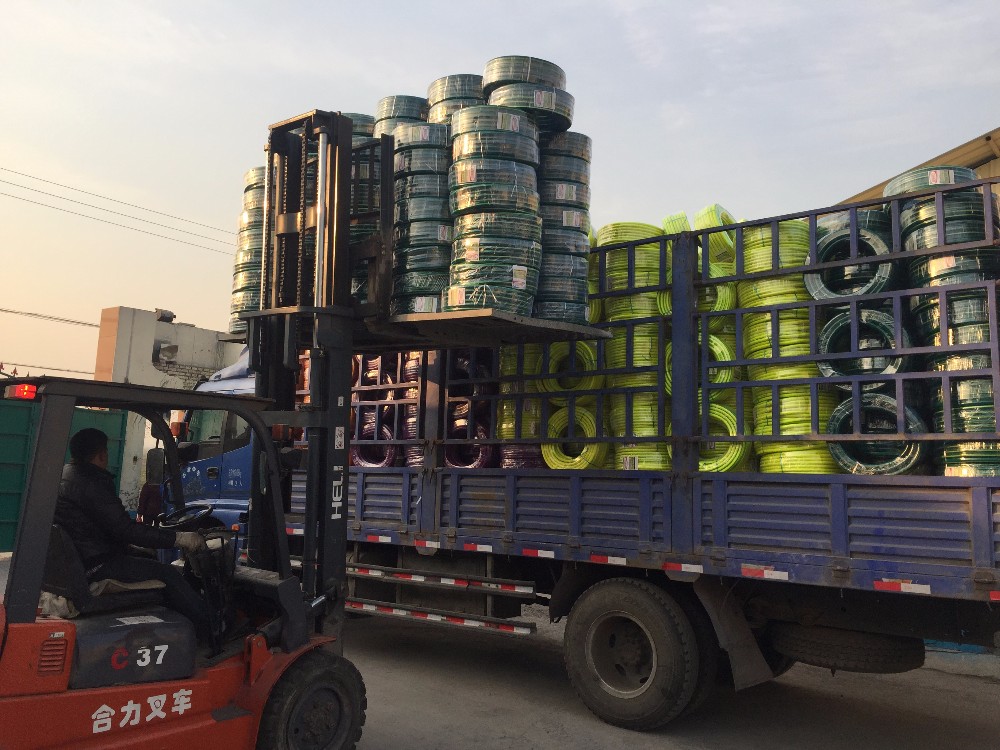high pressure lpg gas hose
Understanding High Pressure LPG Gas Hose Applications and Safety Measures
Liquefied Petroleum Gas (LPG) is widely used for various heating and fueling applications, ranging from residential cooking to industrial uses. To transport LPG safely and efficiently, a specialized hose designed to withstand high pressures is essential. This article delves into the characteristics, applications, and safety measures associated with high-pressure LPG gas hoses.
What is a High Pressure LPG Gas Hose?
A high-pressure LPG gas hose is a type of flexible tubing used to convey liquefied petroleum gas from one point to another under significant pressure. These hoses are engineered to endure the rigorous demands of high-pressure systems, often rated for pressures up to 350 PSI or more, depending on the specific hose type and application. The construction of these hoses typically involves durable materials like synthetic rubber or thermoplastic, reinforced with materials such as steel wire to provide additional strength and flexibility.
Applications of High Pressure LPG Gas Hose
High-pressure LPG hoses have a variety of applications across different sectors
1. Industrial Use In industrial settings, high-pressure LPG hoses are critical for fueling machinery, welders, and other equipment. Their robust design withstands the harsh environments often encountered in manufacturing or construction sites.
2. Commercial Kitchens Restaurants and catering businesses utilize high-pressure LPG hoses to connect their cooking appliances to gas supply systems. The ability to maintain pressure is vital for consistent cooking performance.
3. Residential Heating Homeowners who utilize LPG for heating, hot water, or cooking rely on high-pressure hoses to connect their gas tanks to appliances. Proper installation and maintenance ensure safety and efficiency.
Safety Measures
high pressure lpg gas hose

While high-pressure LPG gas hoses are designed to handle substantial amounts of pressure, proper handling and safety measures are crucial to prevent accidents.
1. Regular Inspections Frequent visual inspections for cracks, wear, or other damage are essential. Any signs of deterioration should prompt immediate replacement.
2. Proper Connections Ensure that all connections are secure and leak-free. Using the correct fittings and clamps can help maintain integrity in high-pressure environments.
3. Avoiding Kinks and Bends It is vital to route hoses in a way that avoids sharp bends or kinks. Such obstructions can lead to pressure build-up and eventual hose failure.
4. Temperature Tolerance LPG hoses must be rated for the temperature ranges expected in their environment. Extreme temperatures can affect the hose material, leading to premature failure.
5. Correct Length and Size Always use hoses that are appropriately sized for the application. Hoses that are too long can lead to increased pressure loss, while those that are too short can be subjected to excessive tension.
6. Leak Detection Implementing regular leak detection practices, such as using soapy water on connections to check for bubbles, is a good preventive measure.
7. Use of Protective Covers In specific settings, protective sleeves or covers can help shield hoses from abrasive materials or harsh chemicals, thus prolonging their lifespan.
Conclusion
High-pressure LPG gas hoses play a crucial role in numerous applications, from residential cooking to heavy industrial use. Understanding their characteristics, applications, and safety protocols is essential for ensuring safe and efficient operation. As the demand for LPG continues to grow, so does the need for robust and reliable hose systems to support its diverse applications. Investing time in regular maintenance and adhering to safety guidelines will not only enhance performance but also minimize potential risks associated with LPG use.
-
Unrivaled Performance and Applications of PU Pneumatic Hoses and TubesNewsJun.11,2025
-
The Transparent World of Industrial Tubing and Hosing SolutionsNewsJun.11,2025
-
The Intricate World of Pneumatic Conduits: Tubes and HosesNewsJun.11,2025
-
The Dynamic Landscape of Pneumatic Conduits: Unraveling Key ComponentsNewsJun.11,2025
-
The Diverse Applications and Significance of Transparent PVC TubingNewsJun.11,2025
-
High - Pressure Pneumatic Tubing and Systems: An In - Depth LookNewsJun.11,2025














